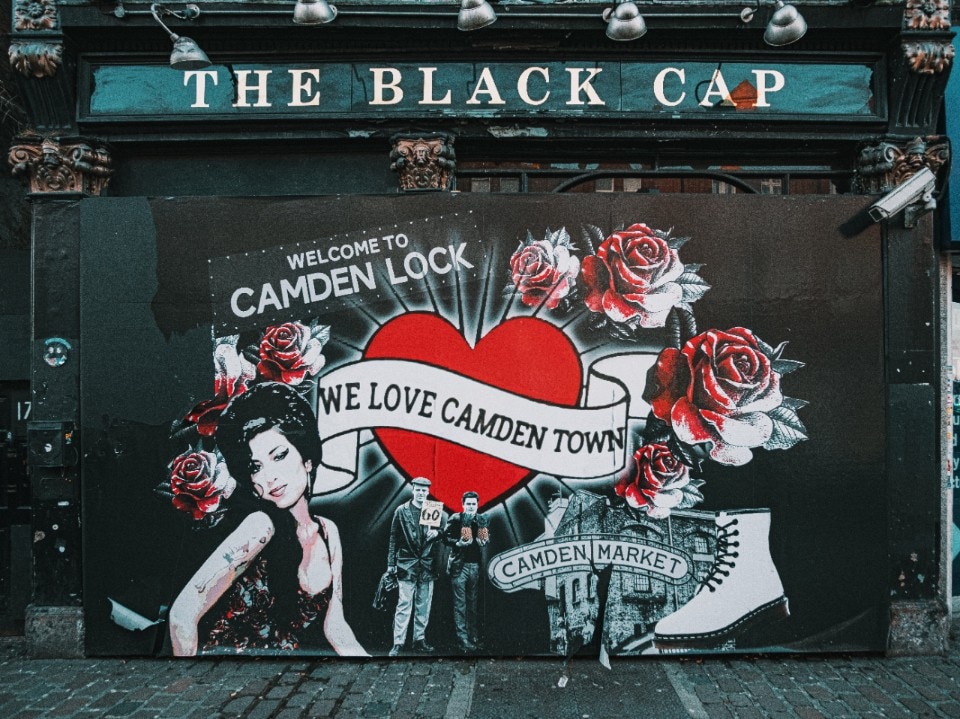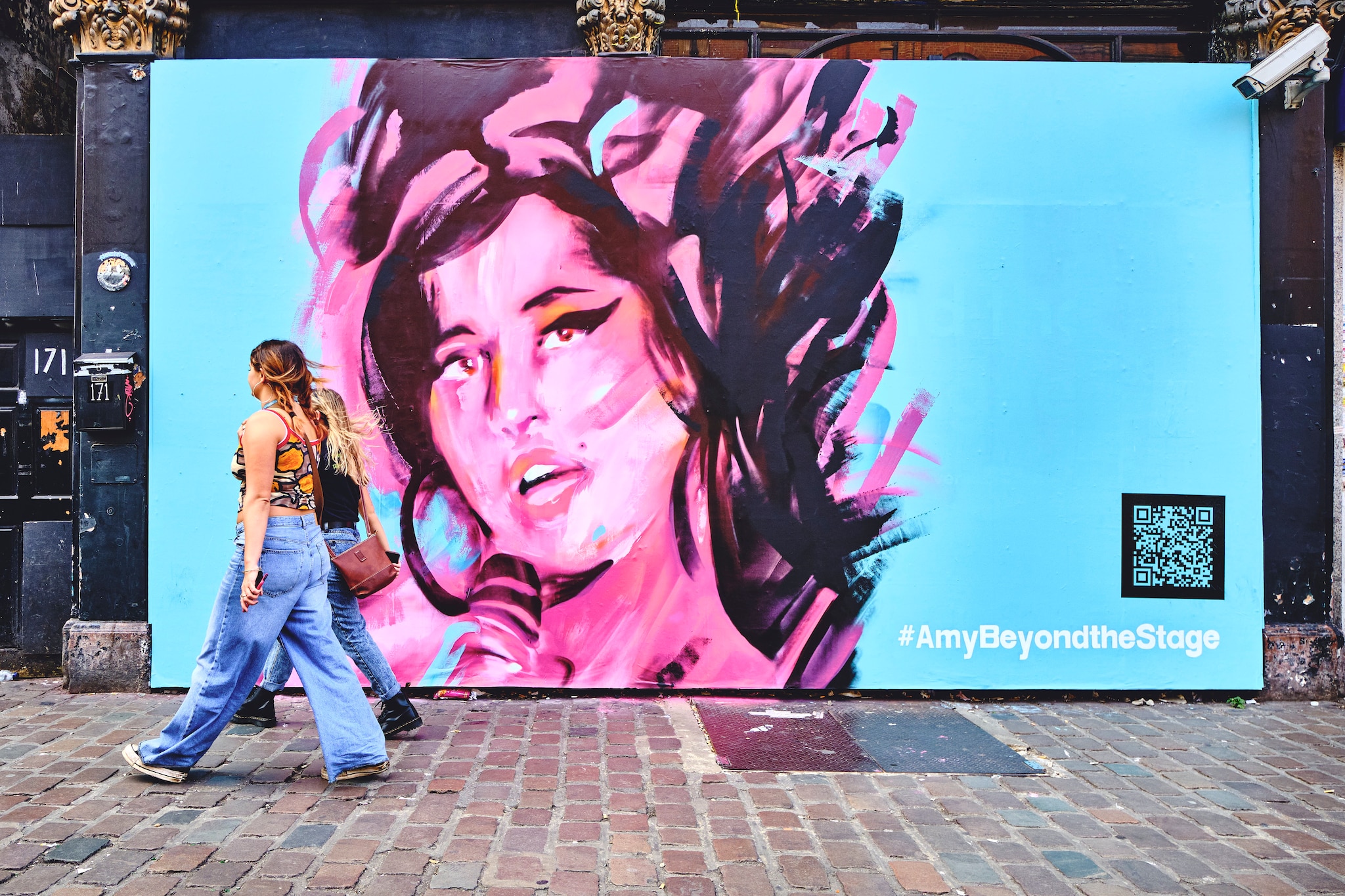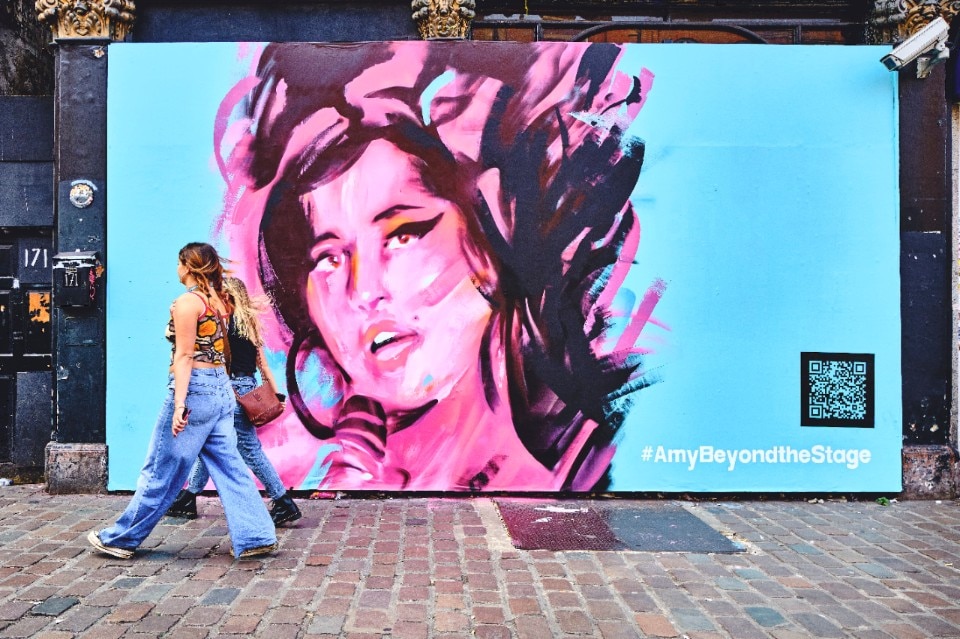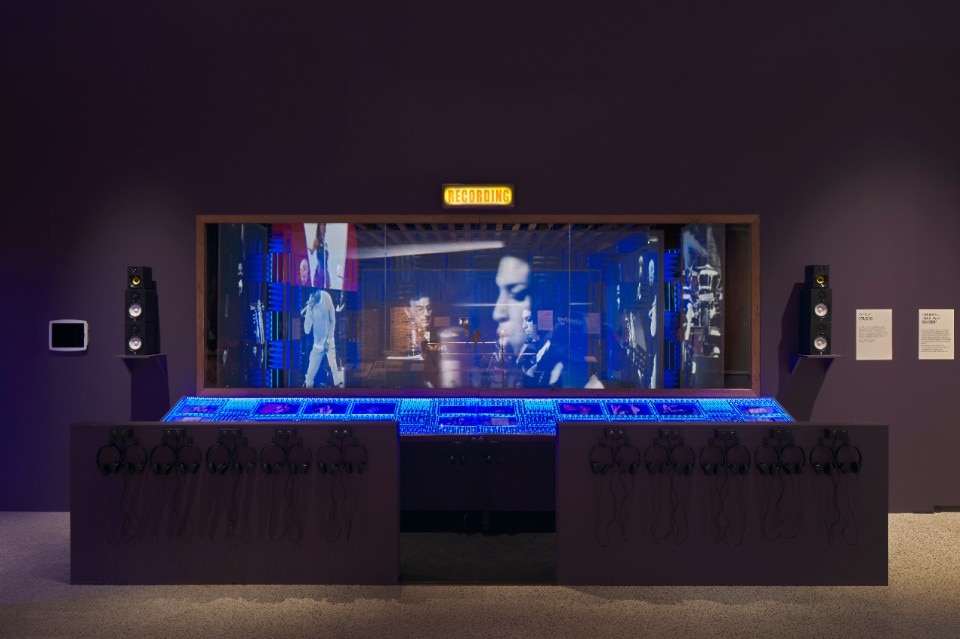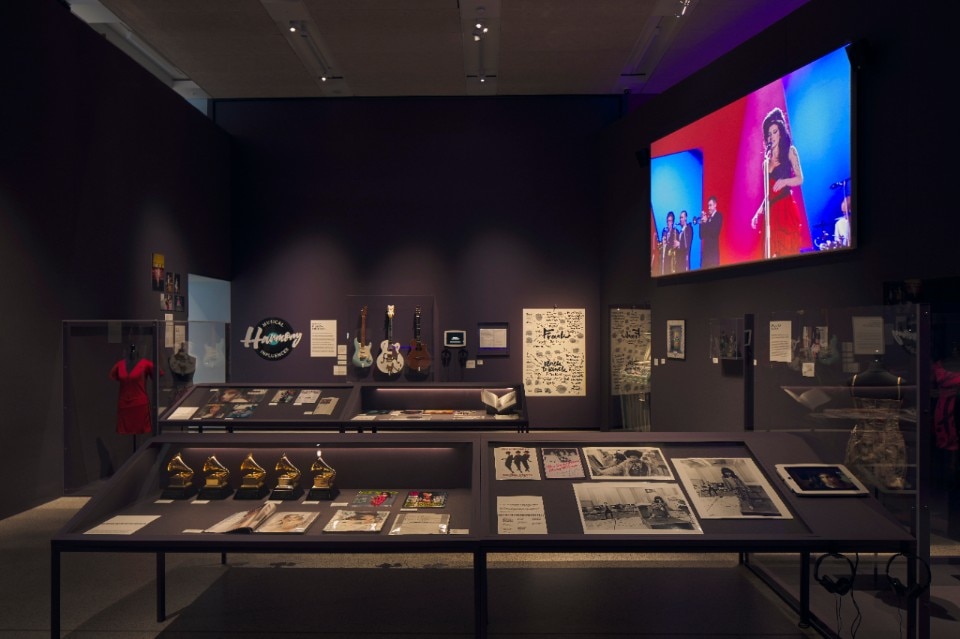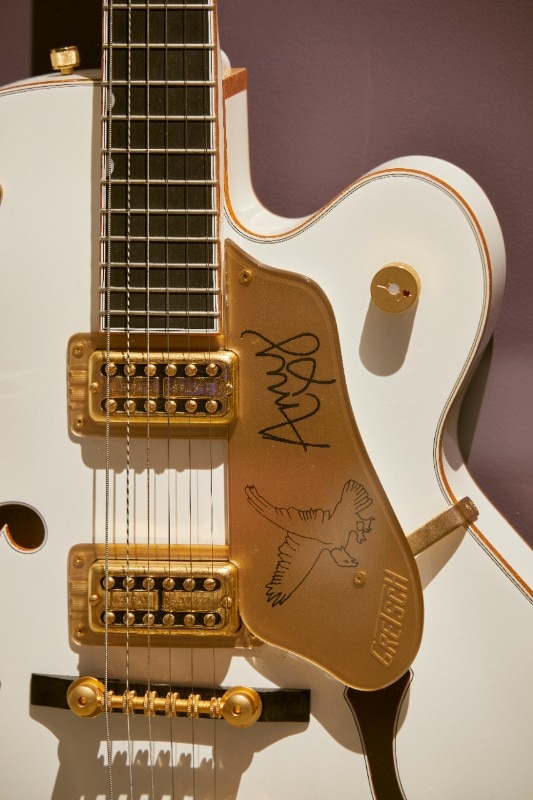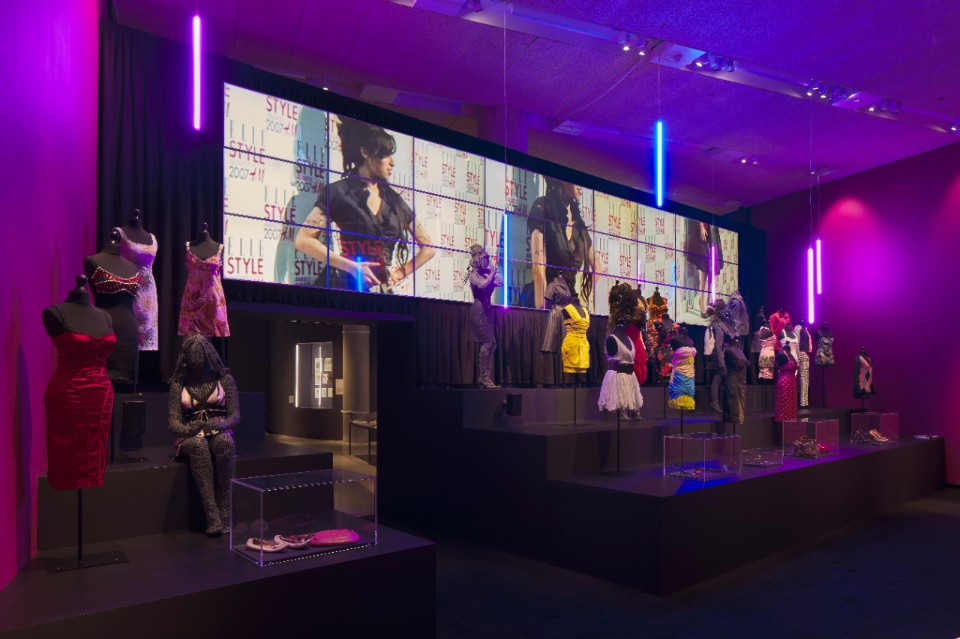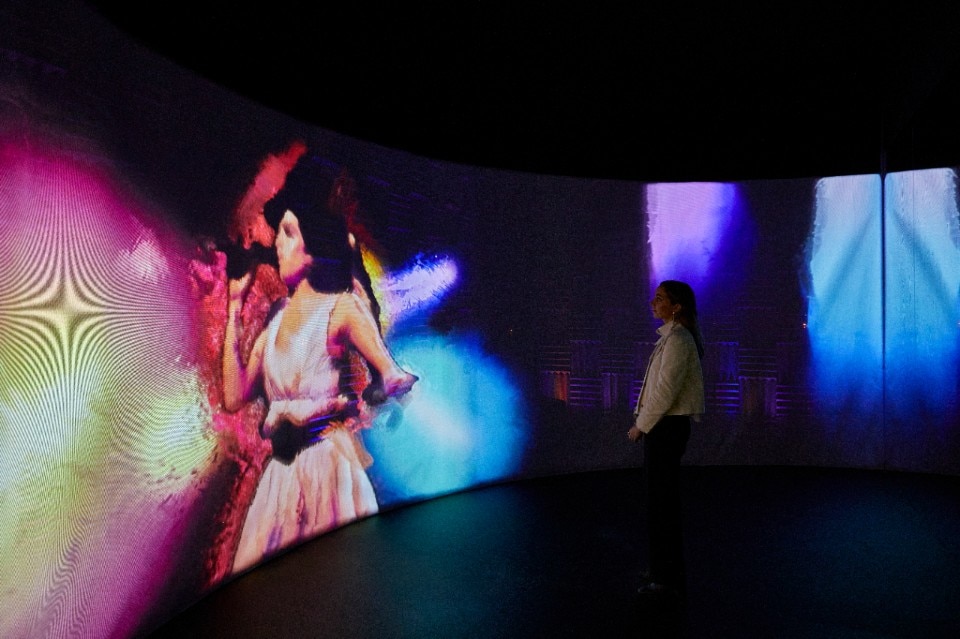Every icon leaves a precious legacy in the places that have hosted, supported and, sometimes, paid homage to them even after the sun set on their career. For Amy Winehouse, the singer who made blues hot again in the early 2000s, that place is the London neighbourhood of Camden Town.
Winehouse used to called it her “playground” and there are many corners of the borough that still hold a piece of her brief and troubled rise, cut short by her death at the age of 27.
“Amy: Beyond the Stage”, an exhibition dedicated to the artist currently on display at the Design Museum of London to mark the tenth anniversary of her death, welcomes the public with a Camden Square street sign covered in dedications from fans written with felt-tip pens. One of the many signs that the local authority had to continually re-post because nostalgic fans were taking them – apparently, around 14 signs have disappeared in the last six years.
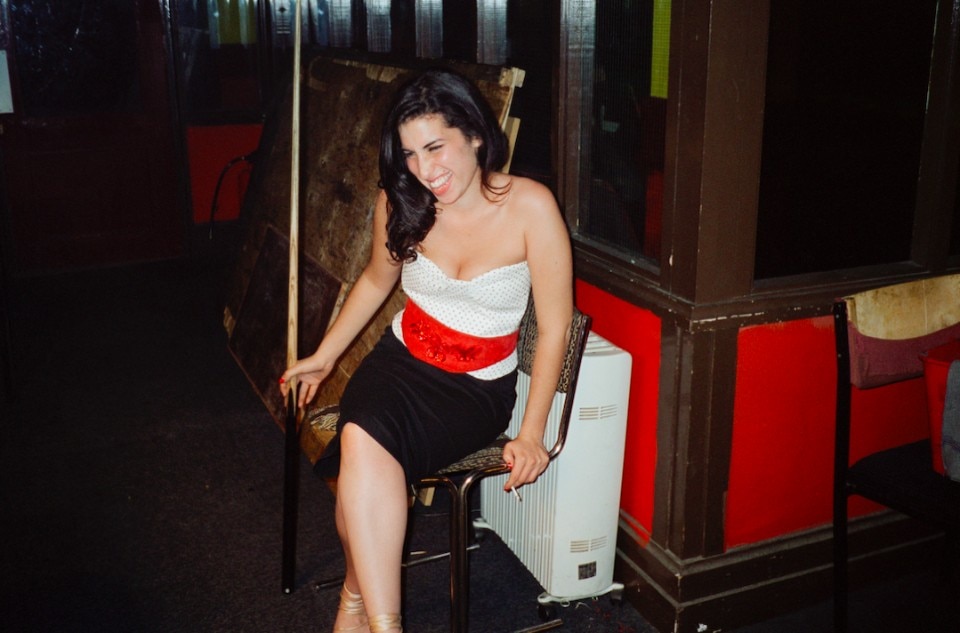
The square became famous for the house where Winehouse lived for many years and died in 2011, and still today it continues to have sentimental value for the singer’s friends, family and fans who paid tribute to her by leaving flowers and dedications there.
“Amy had a close connection with Camden, the place she moved to once she had signed with Island Records in 2002. She frequented the vintage shops, market stalls, record stores and music venues and embraced the street fashion, including rockabilly and other subcultural styles that shaped her future image,” tells us Priya Khanchandani, curator of the exhibition at the Design Museum.
For Khanchandani, it is clear what made Amy Winehouse a generational symbol, but one that is intensely tied to a local context. “Amy’s amazing voice, confessional lyrics and provocative manner made her one of the most important artists of our time. With a sound characterised by 1960s American pop and jazz fused with soul and R&B, she resisted the singular nature of genre, and this was reflected in her image.”
The black wings over her eyes, beehive backcombed hair and flashy coloured plastic accessories cemented a new idea of these musical genres, while the charismatic personality, connection to the local community and scratchy vocals elevated her to an undisputed Camden institution. “Camden became a muse for Amy and in turn she became an icon of Camden,” comments Khanchandani.
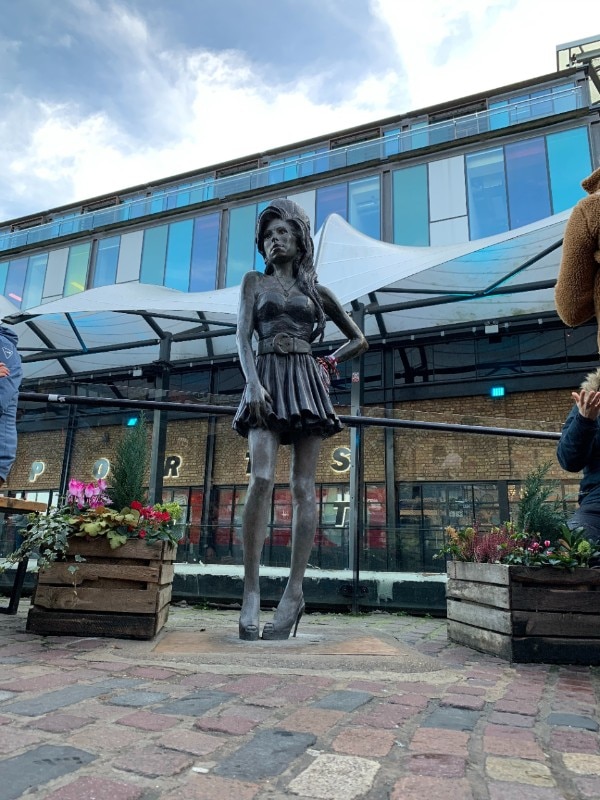
“Although outwardly, Amy defied the notion of design and was incredibly down-to-earth, she had an unmistakable style and drew on a curated set of eclectic and diverse influences. This exhibition pays tribute to the collage of references Amy drew on and which made her a character that was and remains larger than life,” she adds.
The retrospective explores the creative process, powerful music and unforgettable style of a musician whose work has drawn a unique line between styles, through artists like The Ronettes and Mark Ronson and the golden years of designers such as D&G, Moschino and Ralf Lauren.
This exhibition pays tribute to the collage of references Amy drew on and which made her a character that was and remains larger than life.
Born in North London, Winehouse always remained attached to her roots and the local fabric, finding in Camden Town the perfect creative and social landscape for her artistic expression.
From her first demo at just over 16 years old to the huge success of albums such as Frank (2003) and Back to Black (2008), the pop star was a regular presence in the borough and even today it is not difficult to meet someone in a Camden pub who claims to have known her personally.
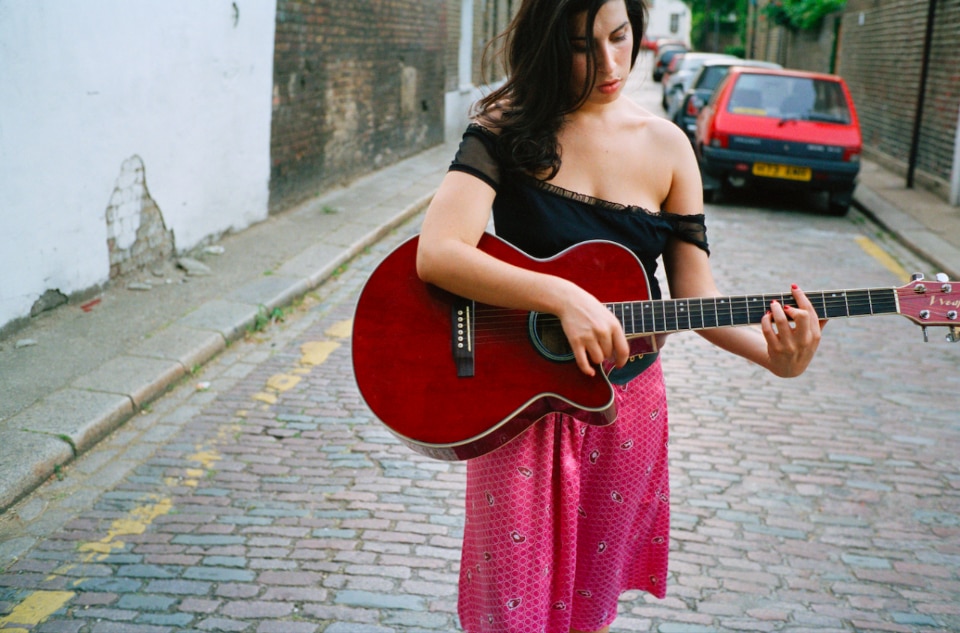
At the Hawley Arms pub on Castlehaven Road, the go-to place for indie rockers in the 2000s, she was spotted more than one night a week, sometimes even pouring her own drinks. Not far away, in Chalk Farm, is the Roundhouse arena, iconic for hosting Amy Winehouse’s last UK concert in July 2011. To this day, the Roundhouse's programme regularly includes tribute concerts to the artist.
And even for those who don’t know her story, it’s impossible to ignore that Amy Winehouse still reigns supreme in Camden. Life-size bronze statues and colourful graffiti immortalise her everywhere in the Camden Market area, where she spent much of her free time between concert halls and bars.
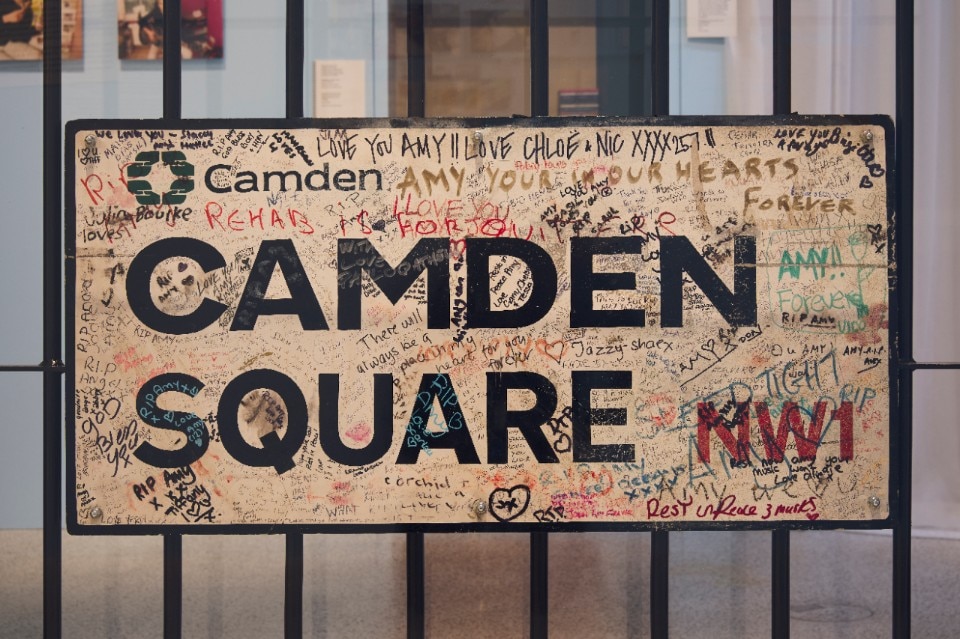
The eclecticism of those streets, which have always been a haven for the city's punks, artists and rebels, made Winehouse feel at home. Immediately embraced as a symbol by the local community, she created such a sincere bond with those places that it was destined to outlive her.
Opening image: We love Camden Town. Courtesy Samuel Regan-Asante via Unsplash


